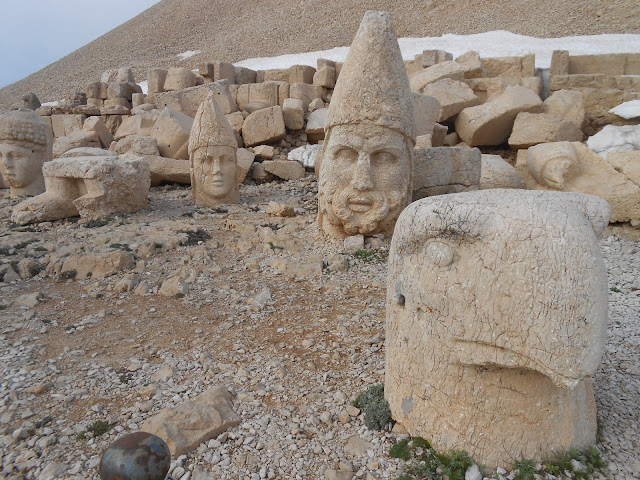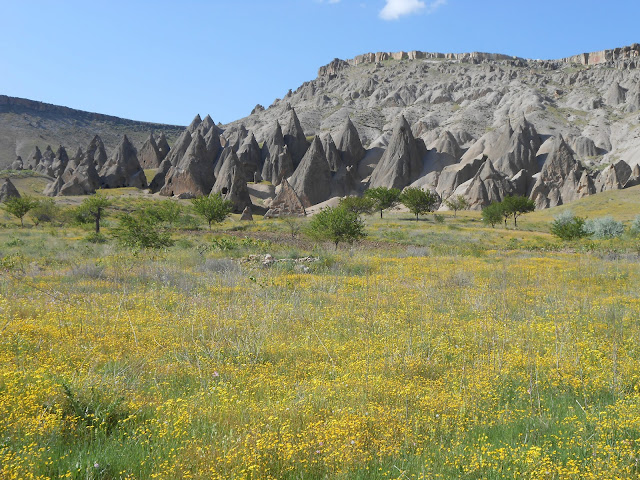On my second evening in Malatya I got a call from a tour organiser asking if I wanted to go to the summit of Mt Nemrut the following day. I declined and then checked my guidebook and the net. It sounded interesting so I called him back and agreed to go.
The summit of Nemrut Dagi (2150m) is crowned with a 50m high artificial peak of crushed rock, beneath which may lie the tombs of a megolomaniac king and three of his female relatives. The mound has never been excavated so nobody knows for sure.
Around the base of the mound are statues of the king and some gods he considered to be his relatives, including Zeus, Apollo and Heracles.
The figures are all seated but have been decapitated either by earthquakes or vandalism so that now their heads lie at their feet gazing forlornly out across the Anti-Taurus mountain range.
This king, Antiochus I Epiphanes (reign 64-38 BC), had an astronomical opinion of himself. I read the following about him:
"Each month Antiochus had two festivities: his birthday which was celebrated on the 16th of each month and his coronation which was celebrated on the 10th of each month. He allocated funds for these events from properties legally bound to the site (Mt. Nemrut). He also appointed families of priests and hierodules, whose descendants were intended to continue the ritual service in perpetuity."
Eventually, he foolishly opposed the Romans in a political dispute, was promptly deposed and his kingdom was absorbed into Roman Asia.
The site was forgotten until 1881 when a German engineer, employed by the Ottomans to assess transport routes, rediscovered it.
The tour included one night in a hotel just beneath the summit. This would allow me to see both sunset and sunrise over the mountains. Sounded great.
The only other people on the tour were a French couple, who both worked for the French government dealing with asylum seekers. Hugo had previously lived for five years in Damascus and Sana'a whilst studying Arabic so the government had put him in charge of asylum seekers from The Republic of Congo. Stephanie spoke fluent Russian so had been put in charge of Sri Lankan refugees. It pleased me to know that it's not only the British government which makes mesmerisingly cretinous decisions.
We arrived at the hotel mid-afternoon and hiked up the final 600m to the summit.
 |
| The path to the summit |
 |
| The artificial summit |
 |
| The heads in front of their seated bodies |
 |
| An eagle and Apollo, the sun god |
 |
| Left to Right : King Antiochus himself and Heracles |
 |
| Heracles, an eagle and a lion |
On the other side of the mound were more heads in a chaotic assembley.


The heads were great and the mound enigmatic, but the sky, having started clear, grew increasingly overcast. We eventually gave up any hope of a sunset and descended to the hotel for dinner.
During the meal Hugo told me of their travels through Georgia, an unsung giant of alcohol consumption. It seems that the whole country spends every night getting thoroughly booted on "chacha", a grape-vodka made from the leftovers of wine-making, until they are rendered incapable of anything but reeling around, pulling faces and laughing like the Damned.
I was much intrigued by his description, look out for my next blog "Simon Got Slaughtered in Georgia"
I went to sleep early, after setting my alarm for 4.15am, hoping for a glorious sunrise.
The alarm went off, I woke up, heard thunder, glimpsed flashes of lightning, groaned, rolled over and slept on till nine.














































